Planning a city break from Dublin to Rome feels exciting when you know the important details in one place. If you don’t have hours to research, don’t worry. I’ve already done the homework for you and gathered everything you actually need to know in this guide.
These are the same tips, flight hacks, and travel tricks that worked for me, and they’ll work for you too. From flight options and entry rules to Rome’s trains, taxis, and public transport tickets, everything is covered here in one place. You’ll also find the best times to visit, how to save on museum tickets, and a few smart ways to explore the city like a local.
Dublin Airport now permits up to 2 liters in carry-on. Check the rules at your return airport in Italy. Once you land in Rome, you’ll find the city surprisingly easy to navigate once you learn a few local tricks.
For your convenience, this blog covers-
- Entry and Documents in Rome for Irish Citizens
- Dublin to Rome Flights for You
- Smart Booking Tips You Need to Know
- Security at Dublin Airport Today
- Picking the Right Rome Airport for Your Plans
- Transportations, Booking, and Budget-Friendly Tips
Entry and Documents in Rome for Irish Citizens
If you’re an Irish citizen, traveling to Italy couldn’t be easier. You don’t need a visa. Just bring a valid passport or passport card, and you’re ready to board. The Italian border process is smooth for EU travelers, so there’s no need to fill in extra forms or pre-register online.
If you’re flying with non-Irish friends, remind them to double-check Italy’s official entry rules, since requirements can differ slightly for non-EU passports. It only takes a few minutes to confirm through the official Italian or EU travel portals.
One quick tip from my own experience: always carry a printed copy or digital backup of your ID and flight confirmation. It’s rarely needed, but it can save you a few minutes at check-in or airport security, especially during busy summer mornings at Dublin Airport.
Dublin to Rome Flights for You
Flying from Dublin to Rome is one of the easiest city routes in Europe. Direct flights run almost every day and usually take just over three hours depending on the wind. Both Aer Lingus and Ryanair fly into Rome Fiumicino, the main international airport.
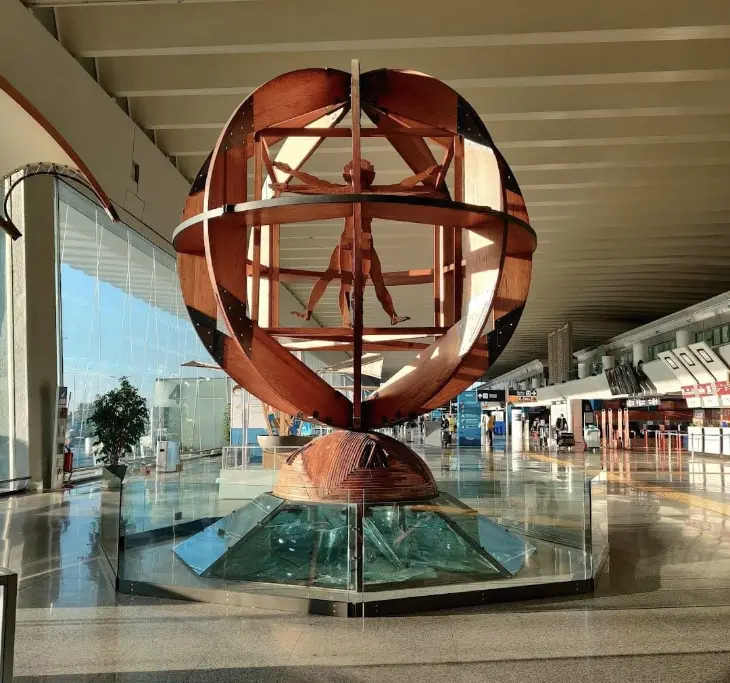
If you prefer comfort, Aer Lingus is a solid choice for extra legroom and checked luggage. If you’re all about saving a few euros, Ryanair often offers unbeatable fares, especially on weekdays. Prices fluctuate throughout the year, but you’ll often find the best deals from late autumn through early spring.
Here’s something I learned after a few trips. Don’t just check one site. Compare prices on both airline websites and Google Flights before booking. Sometimes the same route can differ by €30 to €50 just because of the day you pick.
Smart Booking Tips You Need to Know for Dublin to Rome
Travel prices change constantly, but a few tricks always pay off. Midweek flights on Tuesdays and Wednesdays often come out cheaper, and early morning or late evening departures can save you even more.
Set up free alerts on Google Flights or Skyscanner so you’ll get notified when prices drop. It’s the simplest way to grab a good deal without checking every day. If you’re flexible, try flying out of Dublin early in the week and returning on a Saturday instead of Sunday for better rates.
And don’t forget one bonus tip that saved me before. Always check which Rome airport your Dublin to Rome flight lands in. All current direct flights from Dublin go to Fiumicino. Ciampino mainly serves other European routes, so unless you’re connecting from another city, you’ll most likely arrive at Fiumicino. Knowing this in advance helps you plan your arrival smoothly without surprises.
Security at Dublin Airport Today
Security at Dublin Airport is getting smoother every year, though upgrades are still in progress.
Dublin Airport now allows liquids up to 2 liters in your carry-on, and you don’t need to remove toiletries or laptops during screening. Still check the rules at your departure airport in Italy for the return leg, since not every airport has the same scanners yet. If you’re packing toiletries, place them in an easy-to-reach spot so you can glide through screening without digging through your bag.
From my own experience, early morning flights are usually the busiest, so aim to arrive around two and a half to three hours before departure. Once you’re through, the airport has plenty of cafes and shops to help pass the time before boarding.
If you’re flying back from Italy, remember that Rome airports also follow the same EU liquid and electronics rules, so pack your carry-on the same way for a stress-free return.
Picking the Right Rome Airport for Your Plans
Rome has two airports, and choosing the right one can make a big difference in your first few hours of the Dublin to Rome trip. Most flights from Dublin land at Fiumicino (FCO), the main international airport. It’s larger, modern, and well-connected by train, bus, and taxi. This is the best choice if you’re heading straight into the city or catching a connection later.
The smaller Ciampino (CIA) airport is mainly used by budget airlines like Ryanair. It’s closer to the city and great for short trips or weekend breaks. However, it doesn’t have a train station on site, so you’ll need a quick bus or shuttle to reach the Metro or Termini.
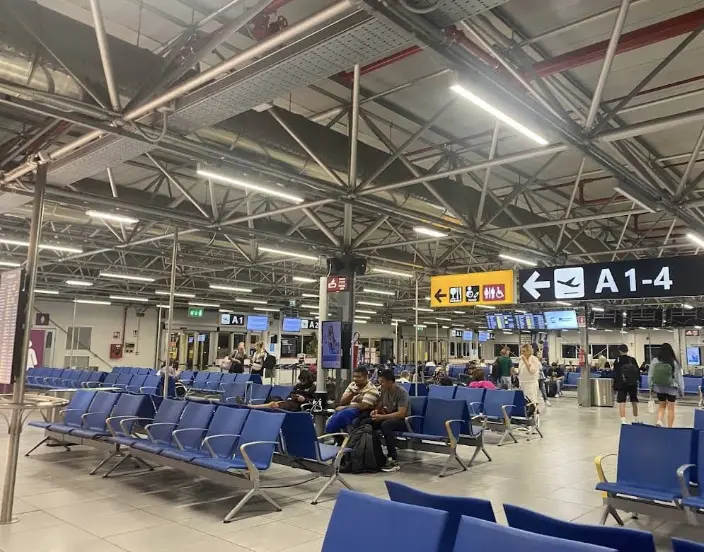
If you’re watching your budget, Ciampino often has cheaper flights. But if you want an easier transfer with more transport options, Fiumicino wins every time. I’ve tried both, and for longer stays, Fiumicino always feels more convenient.
From Fiumicino to the City
Once you land at Fiumicino, getting into Rome is straightforward. The Leonardo Express train runs directly to Termini Station, the city’s main hub, in about 32 minutes. Trains leave every 15 to 20 minutes, and a one-way ticket costs €14. It’s clean, fast, and ideal if you’re staying near the city center.
If you prefer a door-to-door option, the official white taxis are reliable and charge a fixed fare of €55 to anywhere inside the Aurelian Walls. That price already includes your luggage and all supplements, so there’s no need to negotiate. Just follow the signs to the official taxi rank outside Terminals 1 or 3 and ignore anyone offering rides inside the terminal.
For those on a tighter budget, airport buses also run regularly to Termini for around €6 to €7. They take longer than the train but are still a comfortable and simple choice, especially if you’re traveling light.
From Ciampino to the City
Ciampino might be the smaller of Rome’s two airports, but it’s surprisingly easy to reach the city from here. Direct buses connect Ciampino Airport and Termini Station in about 40 minutes, with one-way tickets usually between €6 and €7, depending on how early you book. You’ll find several operators lined up just outside arrivals, so it’s simple to choose the next available departure.
Another option is to hop on a short shuttle to the Anagnina Metro Station on Line A. From there, you can reach Termini or the Spanish Steps without much effort. It’s a bit longer but cheaper and useful if your hotel is along the Metro A route.
If you’re carrying more luggage or arriving late, the official white taxis are still a solid choice. The fixed fare is €40 to any address inside the Aurelian Walls, and the taxi stand is right outside the terminal doors. Always stick to the official rank to avoid private drivers who might overcharge.
Using Public Transport in Rome Without Confusion
Rome’s transport system might look complicated at first, but once you know the basics, it’s actually pretty simple. Tickets work across buses, trams, and the Metro. The standard 100-minute single ticket, called BIT, costs €1.50. You can buy it from machines, kiosks, or even tap your contactless card directly at the gates.
For tourists, the ATAC Metrebus passes are handy. As of July 2025, the updated prices are Roma 24H €8.50, Roma 48H €15, Roma 72H €22, and the weekly CIS €29. These passes cover unlimited rides within their time window, starting from the moment you first validate.
If you’re using contactless Tap and Go, there’s no need to stress about choosing the right ticket. The system calculates the best fare automatically, with a daily cap equal to the 24-hour ticket. Just tap in and out wherever you go.
Once you get the hang of it, Rome’s transport is one of the easiest ways to explore everything from the Colosseum to Trastevere without overspending.
When Trains and Buses Feel Busiest
Rome’s rush hours are no joke, especially if you’re traveling during the workweek. The Metro and buses tend to be busiest between 8 and 9 in the morning and again from 5 to 7 in the evening. If you want a calmer ride, plan your journeys just before or after those windows.
Where to Stay on Your First Visit to Rome
Near Termini works for fast airport access and solid Metro links. Centro Storico and Monti are great for walking to the Forum, Trevi, and the Pantheon. Prati is calm for the Vatican side with quick Metro access. Trastevere brings lively evenings with short tram rides to the center. Pick a base near Metro A or B and check routes on ATAC’s planner before you book.
Saving Money on Water, Tickets & Museum Days in Rome
Public water fountains called nasoni are everywhere and the water is safe, so refill your bottle and skip extra purchases. On the first Sunday of each month many state museums and archaeological parks are free, often under the national Domenica al Museo program.
Always check the site you want to visit and arrive early. The Vatican Museums follow their own calendar and are not part of the state scheme.
Colosseum and Vatican Booking Basics
The Colosseum now requires a reserved time slot, and official sales open 30 days before your date. Use the Parco Colosseo official booking for clear rules and to avoid markups. The Vatican Museums list current prices and booking options on their official site, where you can secure timed entries directly.
Best Time to Visit Rome For Weather & Crowds
Spring and early autumn bring mild temperatures that suit long walking days. May and September balance weather and crowd levels nicely. Early November can feel cooler and better value if you like quieter streets.
Typical Prices So You Can Budget Fast
Leonardo Express is €14 and takes about half an hour. Fiumicino taxi has a fixed €55 fare to the city center within the Aurelian Walls. Ciampino buses to Termini usually cost around six to seven euros when booked ahead and the official Ciampino taxi fare is €40 to addresses within the Aurelian Walls.
The Metro and buses cost €1.50 on the 100-minute BIT, and tourist tickets currently run €8.50 to €29. Tourist tax is payable per person per night for the first ten nights, with the amount tied to your accommodation category.
Safety & Common Confusions Traveler Reports
Rome feels lively and friendly in the evenings. Keep phones zipped away in crowds, wear your day bag across the front in tight Metro cars, and avoid distractions near ticket machines. Move with purpose in busy zones like Termini and at major fountains.
Practical Transport Tips People Wish They Knew Earlier
Here’s something I learned after a few Rome trips. The city’s public transport system is smarter than it looks once you know a few tricks. The Tap and Go system works perfectly on Metro turnstiles, so you can simply tap your contactless card and it will charge the correct fare automatically. The best part is that it comes with daily fare capping, meaning you’ll never pay more than the cost of a 24-hour ticket, no matter how many times you travel in one day.
If you prefer paper tickets, make sure to validate them every time you board a bus, tram, or train. Ticket inspectors are active, and a missed validation can lead to an unnecessary fine, something you really don’t want on your holiday.
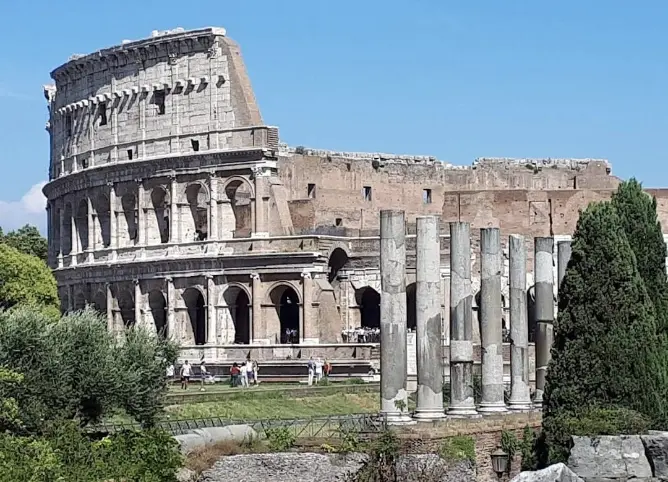
For first-timers, Metro A is great for reaching the Vatican and the Spanish Steps, while Metro B takes you directly to the Colosseum and Circus Maximus. Once you start exploring, you’ll realize that many popular spots are closer than they look on the map. Sometimes, it’s faster and much more enjoyable to walk, grab a gelato, and soak in the atmosphere between sights.
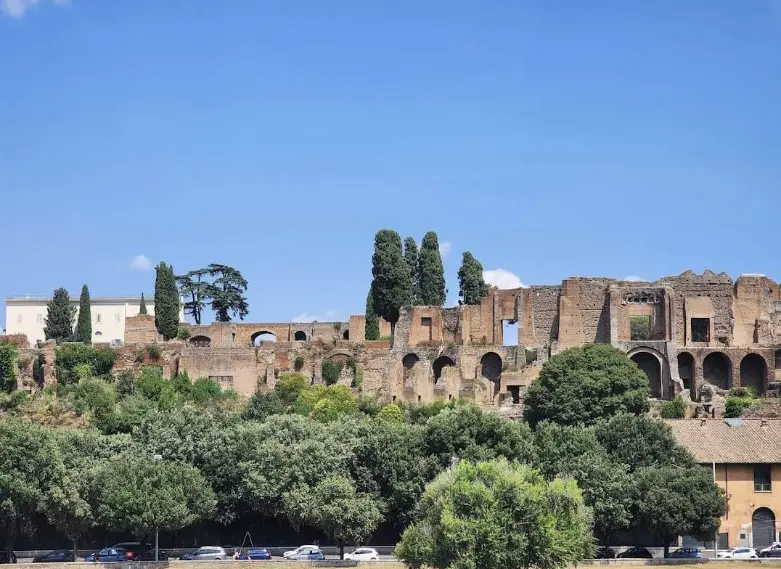
Simple Rules For Taxis & Ride Apps in Rome
Use only official white taxis from the airport ranks and confirm the fixed fare before the ride starts. At Fiumicino, the fixed city fare is €55 to addresses inside the Aurelian Walls. At Ciampino it is €40. The fare includes luggage and supplements. If an unofficial driver approaches you inside the terminal, walk on and follow the signs to the rank outside.
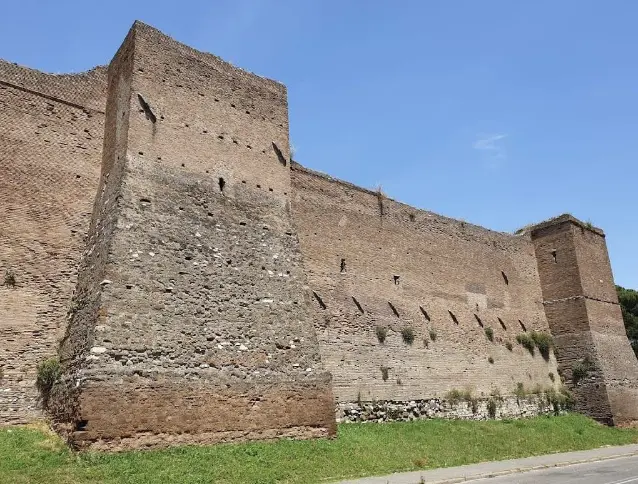
Food & Evenings That Feel Relaxed After Long Days
Romans eat later than in Dublin. Book popular restaurants for 19.30 or 20.00 and expect the room to fill by 21.00. For a casual first night, enjoy simple pizza al taglio near your hotel, then a slow walk for gelato. Interiors can feel cool after sunset in shoulder season, so bring a light jacket.
Final Checks Before You Click Buy
Confirm your Dublin to Rome flight times and the airport. Pick seats that suit your sleep pattern. Decide on your Rome transfer in advance so you can walk straight to the train or the taxi rank.
Load a contactless card for Tap and Go to benefit from the best fare with automatic daily capping. Set a reminder for Colosseum tickets on the thirty-day release. If your dates hit the first Sunday, plan a free museum morning and arrive early.
For the latest stories on Dublin’s travel trails, local bites, and everyday vibes, keep wandering with Dublinz on Facebook and Instagram.